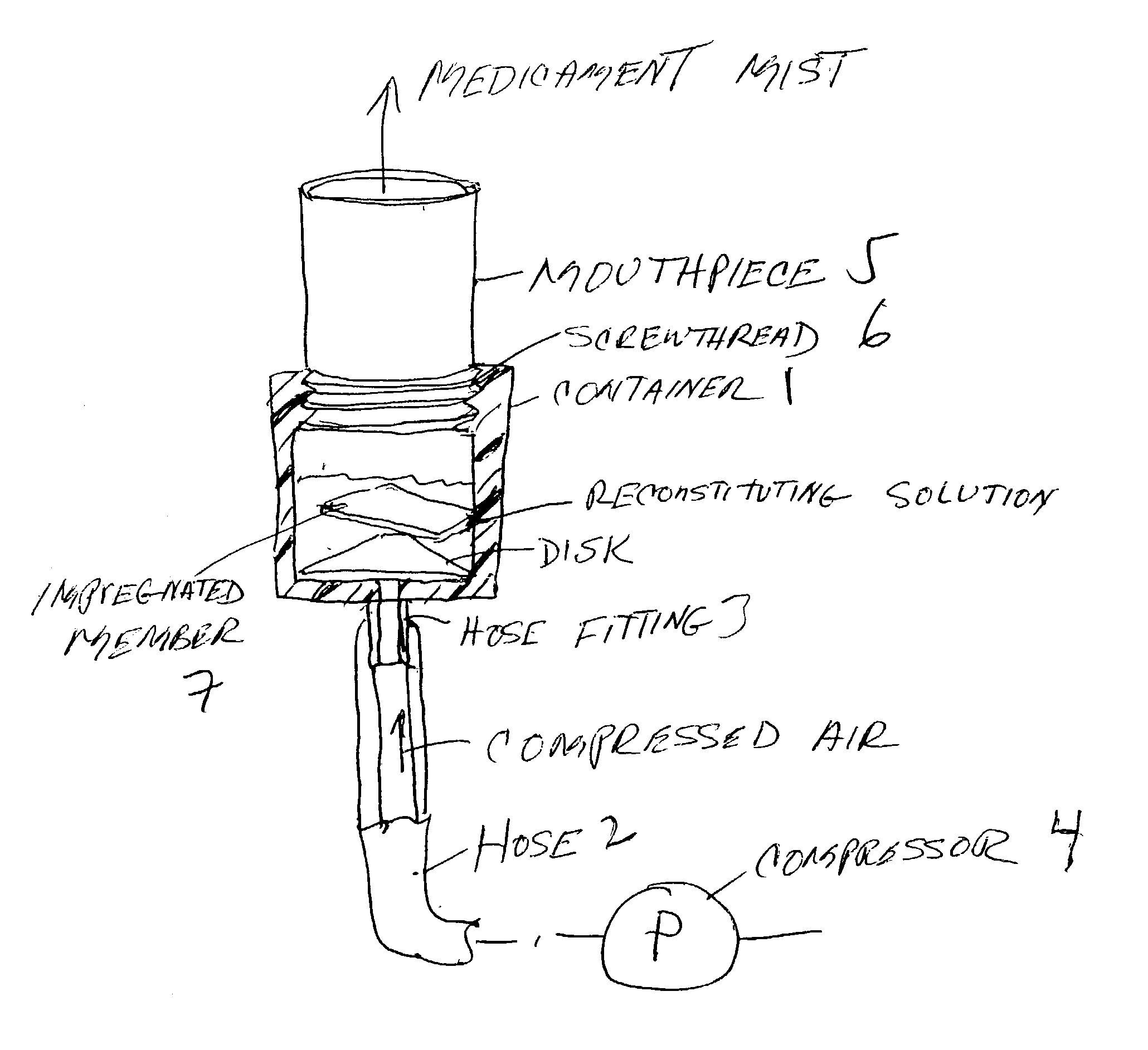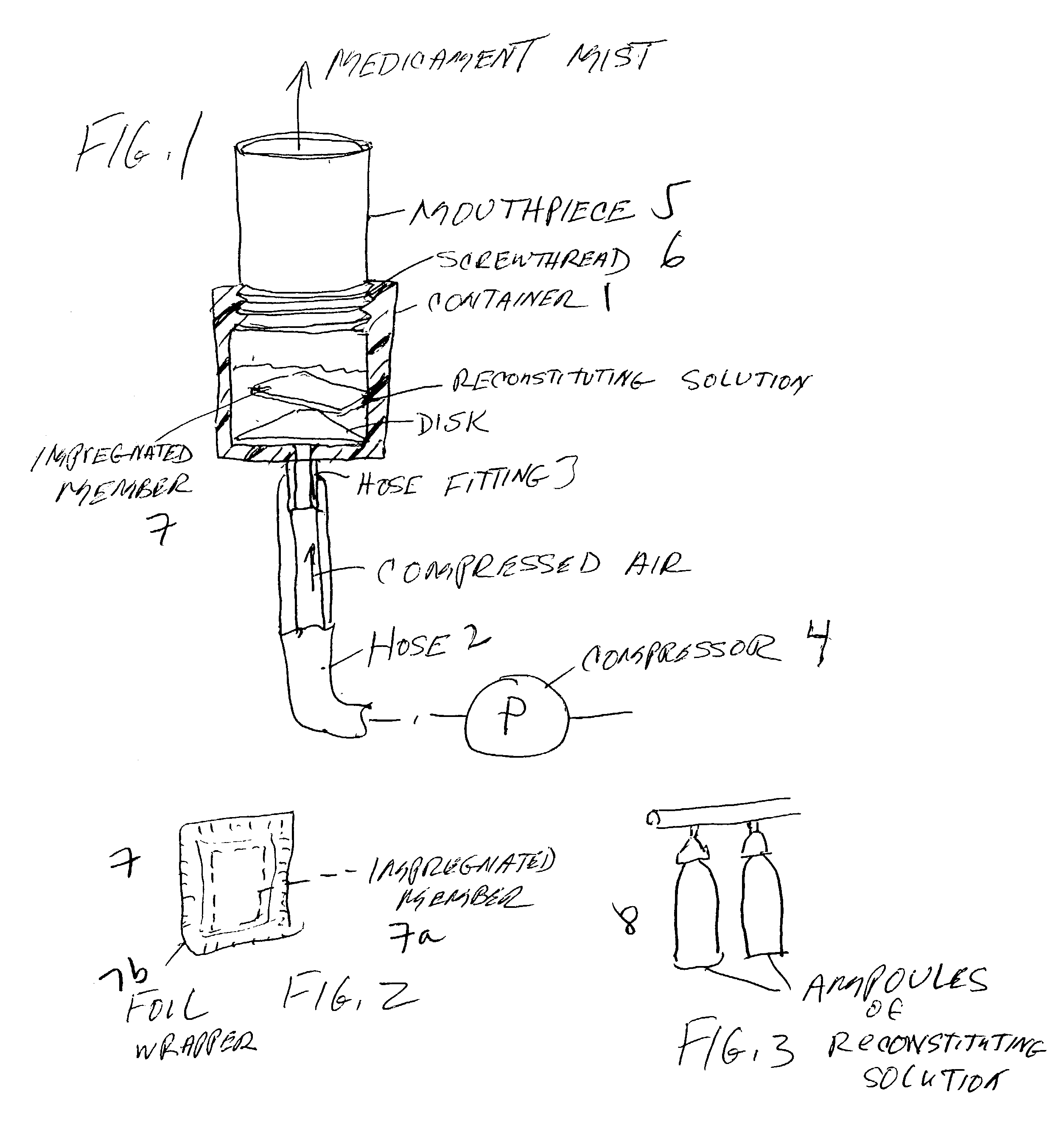Pharmaceutical delivery system for oral inhalation through nebulization consisting of inert substrate impregnated with substance (S) to be solubilized or suspended prior to use
a technology of nebulization and inhalation, which is applied in the direction of inhalators, intravenous devices, medical preparations, etc., can solve the problems of significant alteration, inability of patients to operate and inhale correctly, and inability to differentiate between empty or loaded mdi devices, so as to improve the chemical and microbial stability of the dosage form, improve the chemical and microbial stability of the product, and accelerate the evaporation of solvents
- Summary
- Abstract
- Description
- Claims
- Application Information
AI Technical Summary
Benefits of technology
Problems solved by technology
Method used
Image
Examples
example 1
Albuterol Sulfate for Oral Inhalation
[0076] Albuterol is a relatively selective beta 2-adrenergic bronchodilator. The pharmacologic effects of beta-adrenergic agonist drugs are at least in part attributable to stimulation through beta-adrenergic receptors of intracellular adenyl cyclase, the enzyme that catalyzes the conversion of adenosine triphosphate (ATP) to cyclic-3',5'-adenosine monophosphate (cyclic AMP). Increased cyclic AMP levels are associated with relaxation of bronchial smooth muscle and inhibition of release of mediators of immediate hypersensitivity from cells, especially from mast cells. Albuterol has been used for the relief of bronchospasm in patients with reversible obstructive airway disease and acute attacks of bronchospasm. Albuterol is available in dosage forms such as metered dose pressurized inhaler, dry powder inhaler and solutions for inhalation. The marketed solutions for inhalation include albuterol sulfate 0.5% and 0.083%. The 0.5% solution is required ...
example 2
Budesonide for Oral Inhalation
[0089] Budesonide is a an anti-inflammatory corticosteroid that exhibits potent glucocorticoid activity and weak mineralocorticoid activity. The precise mechanism of corticosteroid actions on inflammation in asthma is not known. Corticosteroids have been shown to have a wide range of inhibitory activities against multiple cell types (e.g., mast cells, eosinophils, neutrophils, macrophages, and lymphocytes) and mediators (e.g., histamine, eicosanoids, leukotrienes, and cytokines) involved in allergic and non-allergic-mediated inflammation. These anti-inflammatory actions of corticosteroids may contribute to their efficacy in asthma. Budesonide is commercially available as a dry powder inhalation (Pulmicort Turbuhaler) and a suspension for oral inhalation (Pulmicort Respulse 0.25 mg and 0.5 mg) via nebulization. The Respulse is available in sterile unit dose packaged in low density polyethylene container.
[0090] This example provides a formulation of albut...
PUM
 Login to View More
Login to View More Abstract
Description
Claims
Application Information
 Login to View More
Login to View More - R&D
- Intellectual Property
- Life Sciences
- Materials
- Tech Scout
- Unparalleled Data Quality
- Higher Quality Content
- 60% Fewer Hallucinations
Browse by: Latest US Patents, China's latest patents, Technical Efficacy Thesaurus, Application Domain, Technology Topic, Popular Technical Reports.
© 2025 PatSnap. All rights reserved.Legal|Privacy policy|Modern Slavery Act Transparency Statement|Sitemap|About US| Contact US: help@patsnap.com


